|
|
|
Sort Order |
|
|
|
Items / Page
|
|
|
|
|
|
|
| Srl | Item |
| 1 |
ID:
169747
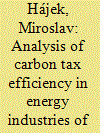

|
|
|
|
|
| Summary/Abstract |
A carbon tax is one of economic policy instruments of environmental protection supposed to contribute to the reduction of greenhouse gas (GHG) emissions. A functional carbon tax aims at incorporating costs for elimination of environmental harm into the pricing decisions. In terms of global climate change, the carbon tax is usually imposed on the production, distribution or consumption of carbon-content fossil fuels. The main aim of the study is to evaluate the carbon tax environmental effectiveness in the energy industries of selected EU countries, namely Sweden, Finland, Denmark, Ireland and Slovenia. To achieve the principal research objective, the multiple panel regression method for the selected variables was used, the synergy of other environmental policy tools being taken into account. Control variables employed were emission allowance price, household final consumption expenditure, corporate investments, solid fuel consumption and renewable energy consumption. The analysis results suggest that the carbon tax in the energy industry is environmentally efficient, an increased tax rate allowing to reduce GHG production, which is statistically significantly affected by the consumption of fossil fuels. Based on the estimated partial regression coefficient (−0.01158), raising the carbon tax by one euro per tonne can cut annual per capita emissions by 11.58 kg.
|
|
|
|
|
|
|
|
|
|
|
|
|
|
|
|
| 2 |
ID:
150458
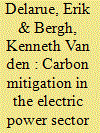

|
|
|
|
|
| Summary/Abstract |
In Europe, CO2 emissions from the electric power sector and energy intensive industries are capped under a cap-and-trade system (i.e., the EU ETS). When other indirect measures are taken to impact emissions in a specific sector under the cap (such as a push for renewables in the electric power sector), this has implications on the overall allowance price, and on CO2 emissions both from this specific sector and the other sectors under the cap. The central contribution of this paper is the derivation of impact curves, which describe these interactions, i.e., the impact on allowance price and the shift of emissions across sectors. From a set of detailed simulations of the electric power system operation, a so-called “emission plane” is obtained, from which impact curves can be derived. Focus is on interactions between CO2 abatement through fuel switching and measures affecting the residual electricity demand (such as deployment of renewables) in the electric power sector, as well as on interactions with other sectors, both in a short-term framework. A case study for Central-Western Europe is presented. The analysis reveals a substantial impact of renewables on CO2 emissions, and hence on emissions shifts across sectors and/or on the CO2 price.
|
|
|
|
|
|
|
|
|
|
|
|
|
|
|
|
| 3 |
ID:
177153
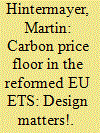

|
|
|
|
|
| Summary/Abstract |
Despite the reform of the European Emissions Trading System (EU ETS), discussions about complementing it with a carbon price floor (CPF) are ongoing. This paper analyzes the effect of a European CPF in the reformed EU ETS using a Hotelling model of the EU ETS, amended by the market stability reserve (MSR), and the cancellation mechanism. Two CPF designs are compared: (1) a buyback program and (2) a top-up tax. The buyback program sets a minimum price for the allowances from the implementation year onwards. After the announcement, firms anticipate the CPF, which immediately increases the carbon price to the discounted CPF level. Therefore, firms emit less and bank more allowances, leading to more intake into the MSR, and more cancellation of allowances. The top-up tax imposes a tax on emissions, which enhances the market price of allowances to the CPF level from the implementation year onwards. Firms increase their short-run emissions in anticipation of the upcoming tax. Only after the implementation year firms start to lower their emissions. Thus, the effect on aggregate cancellation is ambiguous. Despite being equivalent in a static setting, the design choice for the CPF matters in a dynamic context, such as the EU ETS.
|
|
|
|
|
|
|
|
|
|
|
|
|
|
|
|
| 4 |
ID:
149931


|
|
|
|
|
| Summary/Abstract |
This article questions the assumption that carbon markets create a level playing field by exploring the relationship between the organisation of capital and the organisation of emissions in the European Union Emissions Trading System (EU ETS). It constructs a database by matching installations and owners to reveal that a relatively small number of large-scale coal-fired power stations, owned by a very small group of states and corporations, are responsible for a significant proportion of greenhouse gas emissions. The findings are analysed by considering how technological dependence on coal together with the corporate institutional form combine to support the socio-spatial concentration and centralisation of capital and emissions. Case studies of the consolidation of the seven largest polluting owners from Europe's coal-dependent electricity sector and the carbon trading strategies of the two largest polluters, RWE and E.ON, then assess the impacts of energy liberalisation and emissions trading policies. The article concludes that EU energy and climate policies are pulling in different directions by clustering responsibility for greenhouse gas emissions and diffusing responsibility to address climate change. The uneven distribution of emissions within the EU ETS makes an alternative policy approach that directly targets the biggest corporate and state polluters both feasible and necessary.
|
|
|
|
|
|
|
|
|
|
|
|
|
|
|
|
| 5 |
ID:
124693
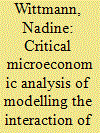

|
|
|
|
|
| Publication |
2013.
|
| Summary/Abstract |
This paper presents an alternative approach to a graphical analysis of the interaction of White Certificates with the EU emission trading scheme as the approach of Sorrell et al. (2009a contains the following aspects that require some clarification: first, the issue of a clearer distinction between conventional and alternative energy supply is brought up. Second, the concept of a minimum requirement for energy demanded is discussed. Third, the correlation between demand for energy and demand for energy efficiency measures is displayed in a more intuitive manner. The effects of introducing WCTS and EU ETS into the market setting are then analyzed accordingly.
|
|
|
|
|
|
|
|
|
|
|
|
|
|
|
|
| 6 |
ID:
097338
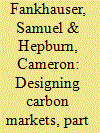

|
|
|
|
|
| Publication |
2010.
|
| Summary/Abstract |
This paper analyses the design of carbon markets in space (i.e., geographically). It is part of a twin set of papers that, starting from first principles, ask what an optimal global carbon market would look like by around 2030. Our focus is on firm-level cap-and-trade systems, although much of what we say would also apply to government-level trading and carbon offset schemes. We examine the "first principles" of spatial design to maximise flexibility and to minimise costs, including key design issues in linking national and regional carbon markets together to create a global carbon market.
|
|
|
|
|
|
|
|
|
|
|
|
|
|
|
|
| 7 |
ID:
097333


|
|
|
|
|
| Publication |
2010.
|
| Summary/Abstract |
This paper analyses the design of carbon markets in time (i.e., intertemporally). It is part of a twin set of papers that ask, starting from first principles, what an optimal global carbon market would look like by around 2030. Our focus is on firm-level cap-and-trade systems, although much of what we say would also apply to government-level trading and carbon offset schemes. We examine the "first principles" of temporal design that would help to maximise flexibility and to minimise costs, including banking and borrowing and other mechanisms to provide greater carbon price predictability and credibility over time.
|
|
|
|
|
|
|
|
|
|
|
|
|
|
|
|
| 8 |
ID:
132685
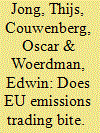

|
|
|
|
|
| Publication |
2014.
|
| Summary/Abstract |
The aim of this paper is to examine whether shareholders consider the EU Emissions Trading Scheme (EU ETS) as value-relevant for the participating firms. An analysis is conducted of the share prices changes as caused by the first publication of compliance data in April, 2006, which disclosed an over-allocation of emission allowances. Through an event study, it is shown that share prices actually increased as a result of the allowance price drop when firms have a lower carbon-intensity of production and larger allowance holdings. There was no significant value impact from firms× allowance trade activity or from the pass-through of carbon-related production costs (carbon leakage). The conclusion is that the EU ETS does 'bite'. The main impact on the share prices of firms arises from their carbon-intensity of production. The EU ETS is thus valued as a restriction on pollution.
|
|
|
|
|
|
|
|
|
|
|
|
|
|
|
|
| 9 |
ID:
166535
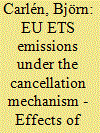

|
|
|
|
|
| Summary/Abstract |
Beginning in 2023, allowances held in the market stability reserve of the EU ETS above the number of allowances auctioned the previous year will be cancelled. In this paper, we analyse the consequences of this new cancellation mechanism. Using numerical analysis, we show that additional national abatement measures now have the potential to reduce total EU ETS emissions. A key insight is that, for this to happen, domestic emission reductions must occur early. How early depends crucially on how the future demand for allowances evolve. To facilitate an understanding of the rather complex system the reformed EU ETS constitutes, we present a series of extensions to the analysis to show how the results are affected by, for example, future emission levels, technological development, optimising agents and speculative trading in allowances.
|
|
|
|
|
|
|
|
|
|
|
|
|
|
|
|
| 10 |
ID:
125413


|
|
|
|
|
| Publication |
2013.
|
| Summary/Abstract |
Climate change is a global issue, but actions to mitigate its development are regional. Europe has taken the leadership in the carbon emission policy by introducing the Emissions Trading Scheme (EU ETS), formerly regulated by Directive 2003/87/EC and since 2013 by Directive 2009/29/EC. This new Directive imposes a full auctioning system for allocating CO2 allowances to the power sector and encourages the use of renewable energy sources.
We investigate the economic impacts of the EU ETS on the Italian electricity market using a power generation expansion model. We adopt a technological representation of the energy market that also accounts for power exchanges with foreign countries and we assume that generators operate in different zones connected by interconnections with limited capacity. We study both an oligopolistic and a perfectly competitive behavior of Italian generators and we compare the corresponding outcomes under different EU ETS scenarios. Our analysis shows that, in perfect competition, generators generally invest more than in an oligopolistic framework, but in both market configurations, investments in Italy are mainly concentrated in fossil-fired plants, especially in 2020. This happens also when incentives are given to renewables.
The developed models are implemented as complementarity problems and solved in GAMS using the PATH solver.
|
|
|
|
|
|
|
|
|
|
|
|
|
|
|
|
| 11 |
ID:
181464
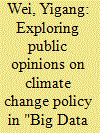

|
|
|
|
|
| Summary/Abstract |
Public awareness has an important effect on the legislation and implementation of climate change policies. Against the backdrop of the "Big Data Era," social media is an appealing and promising tool for a timely and complete understanding of public perception and attitudes towards climate policies. This paper examines the public's spontaneous attention and awareness about carbon emissions trading (ETS). Tweets related to the EU-ETS, published between 2008 and 2019, were collected for multi-dimensional analysis. Empirical results show several important findings. First, public attention on the EU-ETS has increased significantly since 2011. Second, government officials and industry practitioners have a stronger influence in the discussions than the public and industrial enterprises. Third, topic followers mostly gathered in Belgium (16.65%), the UK (11.6%), and some non-regulated countries like the US and Australia. Fourth, the public mainly focused on the policies and legislation, allowance price, and allocation. The innovation of this study rests in the development of a social media data-based research framework to examine the public's cognition of climate policies, which integrates the advantages of public social media, social network analysis, and text topic analysis. This study provides comprehensive analysis and support for climate policy implementation and public acceptance improvement.
|
|
|
|
|
|
|
|
|
|
|
|
|
|
|
|
| 12 |
ID:
136204
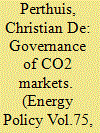

|
|
|
|
|
| Summary/Abstract |
The European emissions trading scheme (EU ETS) is the centerpiece of Europe׳s climate policy. The system has been undermined variously by the weakness of its regulation, an undesirable overlap with other public policies and the far-reaching economic and financial crisis that caused the market price of allowances to plunge. This article attempts to identify the conditions for making the coming years of the EU ETS a success. It draws historical lessons from the eight years the scheme has been in operation, and then presents the various interventions by the public authorities currently under discussion in order to revive the market. Finally, the article proposes to draw lessons from monetary policy by outlining what might be the mandate of an Independent Carbon Market Authority, with responsibility for the dynamic management of the supply of allowances, and whose main mission would be to ensure the optimal linkage between the different temporal horizons of the climate strategy. This article could provide important lessons for schemes developing in the rest of the world, especially in South Korea or in China.
|
|
|
|
|
|
|
|
|
|
|
|
|
|
|
|
| 13 |
ID:
098607


|
|
|
|
|
| Publication |
2010.
|
| Summary/Abstract |
Border adjustments are currently discussed to limit the possible adverse impact of climate policies on competitiveness and carbon leakage. We discuss the main choices that will have to be made if the European Union implements such a system alongside the EU ETS. Although more analysis is required on some issues, on others some design options seem clearly preferable to others. First, the import adjustment should be a requirement to surrender allowances rather than a tax. Second, the general rule to determine the amount of allowances per ton imported should be the product-specific benchmarks that the European Commission is currently elaborating for a different purpose (i.e. to determine the amount of free allowances). Third, this obligation should apply when the imported product is registered at the EU border, and not after the end of the year as is the case for domestic emitters. Fourth, the export adjustment should take the form of a rebate on the amount of allowances a domestic emitter has to surrender. Five, this rebate should equal the above-mentioned product-specific benchmarks, not the emissions of the particular exporting plant or firm. Finally, the adjustment does not have to apply to consumer products but mostly to basic products.
|
|
|
|
|
|
|
|
|
|
|
|
|
|
|
|
| 14 |
ID:
126600


|
|
|
|
|
| Publication |
2013.
|
| Summary/Abstract |
As of 2005, electricity generators in Europe operate under the European Union Emission Trading System (EU ETS). At the same time, European Member States have launched support mechanisms to stimulate the deployment of renewable electricity sources (RES-E). RES-E injections displace CO2 emissions within the sectors operating under the EU ETS and they reduce the demand for European Union Allowances (EUAs), thereby reducing the EUA price. This paper presents the results of an ex post analysis to quantify the impact of RES-E deployment on the EUA price and CO2 emissions in the Western and Southern European electricity sector during the period from 2007 to 2010, following from an operational partial equilibrium model of the electricity sector. This study shows that the CO2 displacement from the electricity sector to other ETS sectors due to RES-E deployment can be up to more than 10% of historical CO2 emissions in the electricity sector. The EUA price decrease caused by RES-E deployment turns out to be likely significant.
|
|
|
|
|
|
|
|
|
|
|
|
|
|
|
|
| 15 |
ID:
125636


|
|
|
|
|
| Publication |
2013.
|
| Summary/Abstract |
We study the impact of the carbon price on the integrating electricity market in the EU. Our theoretical framework suggests that the price of carbon has a positive but uneven impact on electricity prices depending on the marginal production plant. The carbon price may increase price differences in the short run. We apply time series analysis on daily forward data from 2003 to 2011 and investigate whether we can find empirical evidence for our analytical findings. Our results support the hypotheses that integration in electricity prices has increased over time and that the carbon price has a positive but uneven impact on the integration of prices.
|
|
|
|
|
|
|
|
|
|
|
|
|
|
|
|
| 16 |
ID:
185702


|
|
|
|
|
| Summary/Abstract |
Decarbonisation implies conversion to electrification with a subsequent increase in electricity consumption. The EU Emission Trading System (EU ETS) compensates firms for the higher electricity costs. We exploit sectoral and country differences in regulation and a unique dataset on beneficiaries to evaluate the impact of EU ETS indirect cost compensation on the performance of aided firms. Receiving compensation for indirect costs does not have a statistically significant impact on labour productivity. Conversely, there is evidence of a negative performance in terms of turnover, value of total assets and employment of beneficiaries. Results suggest that the amounts transferred to firms might not fully compensate for the higher cost of energy in aided countries. However, the negative effects fade in sectors more exposed to carbon leakage risk. As far as aid intensity is concerned, estimates imply that higher compensation amounts improve performance.
|
|
|
|
|
|
|
|
|
|
|
|
|
|
|
|
| 17 |
ID:
150674
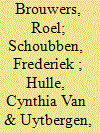

|
|
|
|
|
| Summary/Abstract |
This paper studies the impact of verified emissions publications in the European Emissions Trading Scheme (EU ETS) on the market value of participating companies. Using event study methodology on a unique sample of 368 listed companies, we show that verified emissions only resulted in statistically significant market responses when the carbon price was high and allowance scarcity was anticipated. The cross-section analysis of abnormal returns surrounding the publication of verified emissions shows that share prices decrease when actual emissions relative to allocated emissions increase. This negative relationship between allocation shortfalls and firm value is only significant for firms that are either carbon-intensive, compared to sector peers, or are less likely to pass through carbon-related costs in their product prices. The results suggest that although the EU ETS has been deemed unsuccessful so far due to over-allocation and low carbon price, shareholders initially perceived allowance holdings as value relevant. Our results highlight that a significant carbon market price and addressing pass-through costing are essential for successful future reforms of the EU ETS and other analogous carbon cap-and-trade systems implemented or planned worldwide.
|
|
|
|
|
|
|
|
|
|
|
|
|
|
|
|
| 18 |
ID:
137270
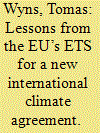

|
|
|
|
|
| Summary/Abstract |
Intended nationally determined contributions (INDCs) for mitigation of greenhouse gas emissions are expected to be an important part of a post-2020 climate agreement under the UNFCCC. However, it is not certain yet what these INDCs will contain and how they will be assessed. The EU Emissions Trading System (EU ETS) faced similar challenges in its first years (2005-12). Thus, the mechanisms and lessons learned under the EU ETS could be applied to the INDCs to create a governance and assessment system that increases transparency and builds trust among parties to the UNFCCC.
|
|
|
|
|
|
|
|
|
|
|
|
|
|
|
|
| 19 |
ID:
121299


|
|
|
|
|
| Publication |
2013.
|
| Summary/Abstract |
This paper identifies factors impacting on the dynamics of the price spread between European Allowances (EUAs) and Certified Emission Reductions (CERs) by detecting changes in the structural relationship between them. While prior studies have assumed a fixed structural relationship, this paper analyses the dynamic evolution of the price spread by employing a time-varying parameter analysis using daily data from March 2008 to September 2011. The analysis reveals that a lack of competitive conditions in markets, access constraints on the use and the availability of CERs, regulatory changes regarding both EUAs and CERs, and uncertainty surrounding CERs can explain a significant portion of the price spread.
|
|
|
|
|
|
|
|
|
|
|
|
|
|
|
|
| 20 |
ID:
179687
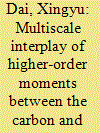

|
|
|
|
|
| Summary/Abstract |
The Phase III of the European Union Emission Trading System (EU ETS) is significantly different from the previous Phases in terms of price trajectory and operational mechanism. Against this background, this study reveals the multiscale interplay of higher-order moments (skewness and kurtosis) between the carbon and energy markets, and formulates optimal portfolio strategies to manage higher-order moments risks at different time horizons. We detect a breakpoint, September 15, 2016, in the carbon-energy markets which divides Phase III into two stages corresponding to different market status. Our findings show that the bidirectional higher-order moments spillovers between the carbon and energy markets are weak at the short-run timescales (below 16 trading days), while the long-run (over 16 trading days) higher-order spillover effect is greatly enhanced. In particular, we find the spillovers in the higher-order moments are strong when the carbon and energy markets are in bullish status. Furthermore, we demonstrate that carbon assets are good short-run hedge against exposure to spillover risks in higher-order moments of the energy markets, while the hedging effectiveness declines at the long-run timescales.
|
|
|
|
|
|
|
|
|
|
|
|
|
|
|
|
|
|
|
|
|